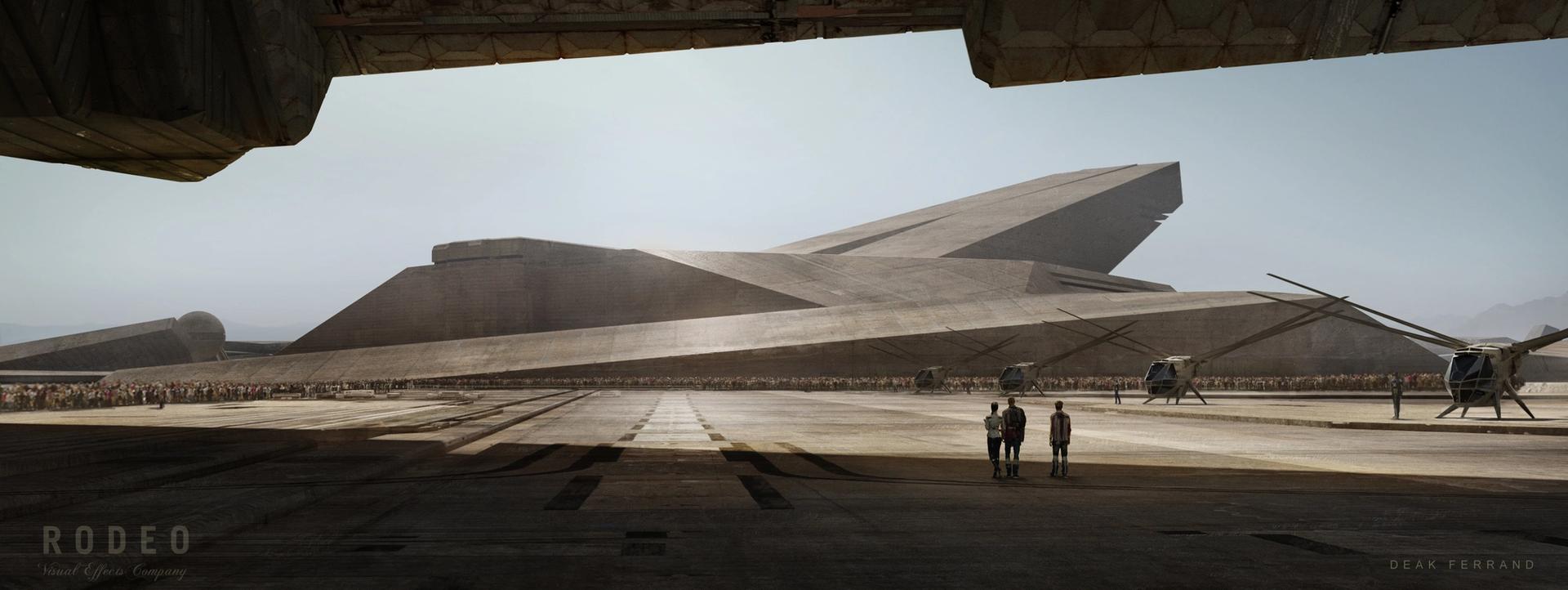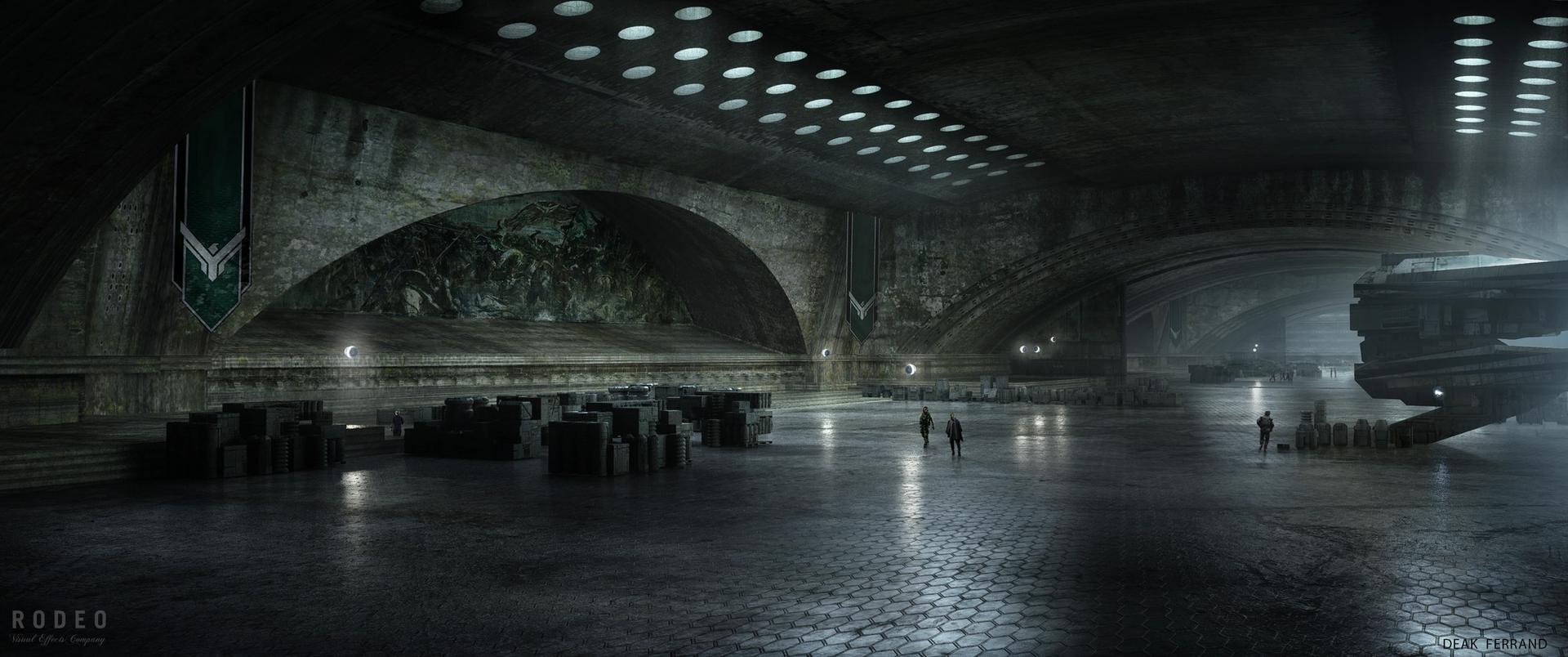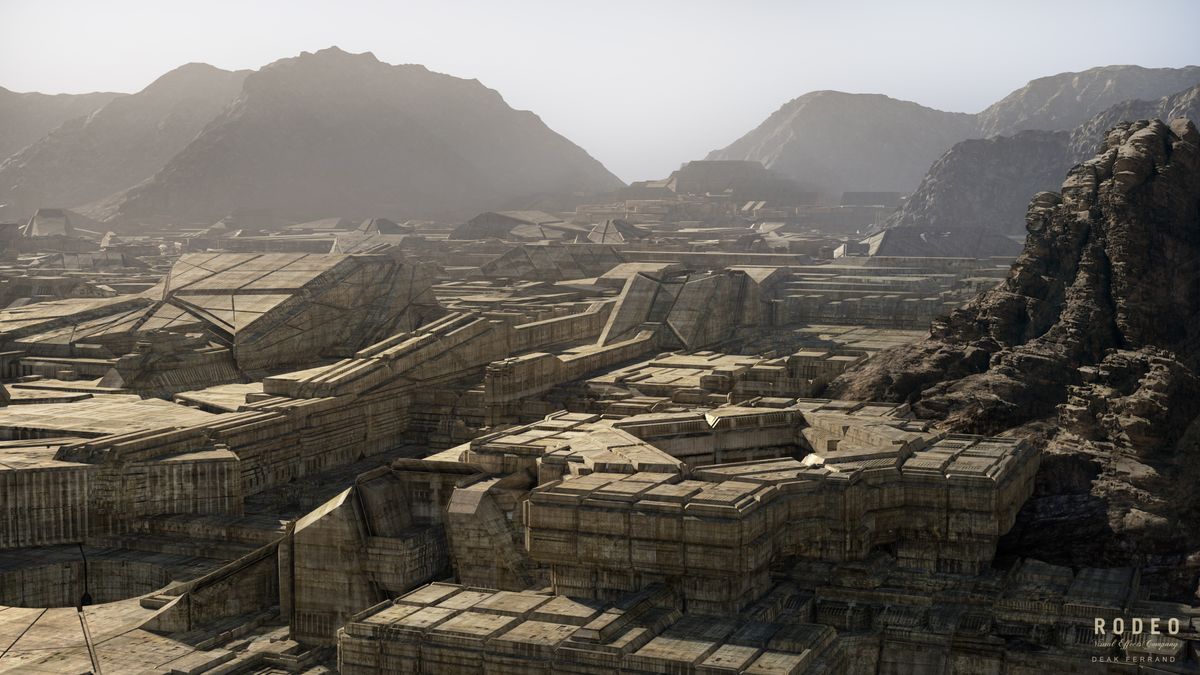The Los Angeles-based concept artist Deak Ferrand, the artist behind the numinous landscapes of Denis Villeneuve’s blockbuster adaptation of Frank Herbert’s Dune, dreams big when he works. The film, which has grossed $332m in the worldwide box office since its release in October, takes viewers to the barren deserts of Arrakis, where feuding houses vie for control of the universe’s most valuable resource, a hallucinogenic that fuels interstellar travel. Ferrand has an eye for the otherworldly. Before Dune, he was trusted to design worlds like the dystopian metropolis of Blade Runner 2049 and various locations of Westeros in Game of Thrones. Deak, who is part of the visual effects firm Rodeo FX, spoke to The Art Newspaper about working with Villeneuve on Dune, and the process of collaborating with others to bring a vision to life.
The Art Newspaper: What was your process in building the visual foundations of Dune with Villeneuve?
Deak Ferrand: It took me some time to figure out where Denis wanted to go. He was working at that time with his storyboard artist. Sam [Hudecki] would do black-and-white, very beautiful drawings. That really helped me to understand that he was going for something very bare. Very simple. Very brutalist, even more than Blade Runner.
You and Villeneuve had just finished working together on the visual effects for Blade Runner 2049.
It’s different when you’re in post-production, designing for visual effects. The time is crunched. You can’t make mistakes. In pre-production, you can. You’re trying to find the thing. You can’t find it the first time, it’s impossible. It develops another creative muscle in your brain.

Deak Ferrand, concept art for Dune (2021). Courtesy of Warner Bros.
Patrice Vermette, the production designer, also became a close collaborator while you worked on Dune. What made the collaboration between the three of you more efficient?
The ability to make mistakes and not to be afraid. When you try to do something that has never been seen before, you have to be able to create something and then throw it in the garbage. You learn so much. You know when something is not needed at all, and then you start fresh on another idea. You start to really pinpoint where you want to go and find this thing that everybody wants. That’s the moment that’s the most fun.
Were there any pieces from other mediums that you took influence from?
For Dune, I tried to not look at other work, and dealt with my own limitations. Patrice would feed me images that weren’t from designers. It would be an architectural feature, or a mood. It’s not specific to any artist.
Caladan, Geidi Prime and Arrakis all have a unique look and feel on-screen. Did those distinctions come to you naturally?
What you design by just having an idea seems to then fit the narrative of the world. I wouldn’t say it’s by accident. I think it’s in your subconscious. Only at the end when everything is put together that you realise that it all fits.
You said that the primary software that you use is Photoshop and Cinema 4D.
We’re always trying to find the best software we can use to go as fast as we can to create the most beautiful image, or the most accurate image. What you’re trying to do, as any artist, is you’re trying to remove the software from yourself and from your creative input. It has to disappear. I need to make sure that I don’t see the software at all.

Deak Ferrand, concept art for Dune (2021). Courtesy of Warner Bros.
Your background is in matte painting, a primarily two-dimensional medium. How does drawing in a 3-D space allow the rest of the production to get a clear perspective on your ideas?
You know that they’re going to have to build sets and spaceships with your designs. You want to make sure you can give them a 3-D file that they can use to make plans. For Dune, all the concepts I did had a 3-D base to it. I could change the angle. I knew the scale and how it would relate to other shots in the film.
This is certainly representative of the evolving technology that’s used to tell stories. What are some of the big breakthroughs that you’ve had as you grew as an artist?
The biggest breakthrough I’ve seen through the years is the way I work, and the way my process is. I know how I’m going to be when I start working. Instead of having a heart attack because it doesn’t work the first time, now I know how to pace myself, and I think that’s the most important thing. I know I’m going to find it somehow. When I was younger, I used to be extremely miserable. I wanted to do the job, but I was miserable doing the job.
You found a pace that was right for you over time. You also mentioned moving to Hollywood during the “golden age of visual effects,” meeting matte painters such as Rocco Gioffre (matte painter for Robocop and Blade Runner) and Syd Dutton (matte painter for Dune, 1984).
We’re not fine artists. We’re not trying to make an image [based on] how we see the world that is very personal. It’s about telling the story of the movie. I think it’s extremely challenging to do that.

Deak Ferrand, concept art for Dune (2021). Courtesy of Warner Bros.
You’ve also worked with many other filmmakers over the years. One of your previous collaborators was Stephen Sommers, who was writing an early draft of Van Helsing while you developed concept art for him.
We knew each other through The Scorpion King. It was a great relationship. I think it works like this sometimes where you’re doing art, and it has an influence on the writing. Maybe the writer is not extremely sure about the setup of certain environments. As you draw, it becomes a bit more solid. He’s going to find something in the drawing and say: “Maybe the scene can be here. Maybe he can fall from here. That’s the mood that I’m looking for.” Even though it will change in the final product, it’s always the most exciting because it’s extremely creative and free.
In closing, what are you looking forward to exploring in Dune: Part Two?
I’m looking forward to working on new environments, new planets. We cracked some code, but what about the other places that we haven’t seen? That’s going to be exciting.


